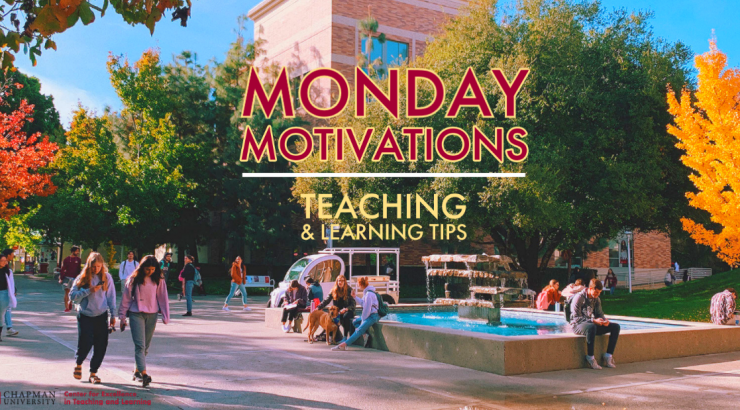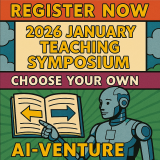
Tips for the Week of May 8, 2023
May 4, 2023
Thinking Outside the Box: Writing in the Age of ChatGPT
As ChatGPT continues to advance, many have argued that we should accept that we can’t fight it, “out-prompt it”, rely entirely on detection tools, or throw out written assignments altogether. James Lang suggests that this is an opportunity to think more creatively about our writing assignments, and perhaps to move on from traditional writing forms, such as personal and argumentative essays, which are easily produced by AI tools. In her book, Next Generation Genres: Teaching Writing for Civic and Academic Engagement (2023), Jessica Singer Early suggests a variety of genres for writing across disciplines that speak to today’s students, including:
- Writing for a podcast
- Infographics
- Artist statements
- Public service announcements
- Turning-point narratives
- Op-Ed pieces
- Proposals
This article provides some additional strategies for approaching writing in the age of ChatGPT and how to engage students in thinking critically about these tools. We encourage you to consider some of these ideas as you plan for next semester.
Support Student Learning with Mnemonic Devices
Mnemonic devices are mental tools to help students store information in memory and retrieve it when needed. Those who studied music probably used the mnemonics “FACE” and “Every Good Boy Does Fine” to recall notes in the treble clef. In addition to supporting retrieval, mnemonics have been found to help students think critically and increase confidence in decision making. For example, during advanced pharmacy practice experiences (like clinicals, labs, simulations, etc.), mnemonics maximized navigation through a complicated decision-making process and minimized patient assessment errors (see mnemonics with pharmacy students). “Mnemonics will not revolutionize education, but given the variety of techniques, their compatibility with other learning strategies, and effectiveness with certain materials, it seems that students would benefit from being familiar with them and knowing when and how to use them” (Putnam, 2015, p. 16). Consider how you might use these mental tools with your students to support their study and learning.
Increase Course Evaluation Participation with Explanation
Why should students complete end-of-course evaluations? Do they understand the value in providing professors with useable feedback? Are they convinced anyone even looks at their comments? Value-Expectancy Theory of Motivation reminds us that even when someone believes they will do well at a task, without placing value in the task their motivation to complete the task will be low. Explanation is a powerful way to develop an understanding of the value of student feedback to course improvement. For example, you might use the analogy of the feedback they get from their professors on their completed assignments. What type of feedback is instructive or actionable, and what kind of feedback is not very useful for making improvements? The same is true of feedback on course evaluations. Explain that you need honest, actionable feedback that will help you improve the educational experience for future students in this course. You may even want to show them this short role-playing video designed by undergraduate students at UC Merced, to elucidate the importance of providing practical, actionable comments. Most importantly, make a commitment to analyze this important feedback, and feel free to contact CETL if you would like a consultation to collaboratively interpret your data for decision making about course improvement.
Interested in exploring any of these ideas further or discussing how you might implement them in your own teaching practices? Is there a tip you’ve tried that you would like to share with colleagues? Contact CETL or schedule a consultation to continue the conversation.


